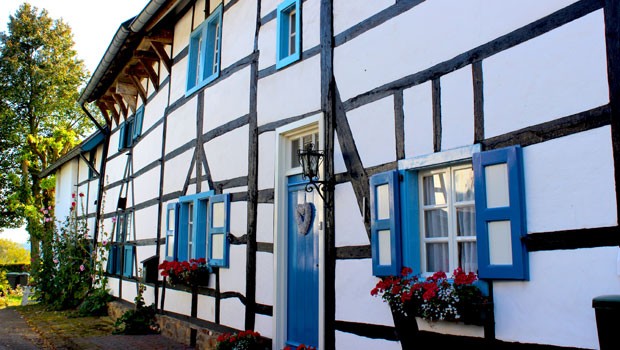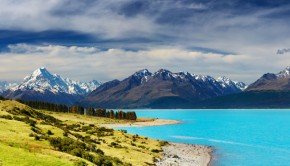Limburg Province: a Different Taste of the Netherlands
When you think of the Netherlands, you might think of Amsterdam, windmills, cheese and clogs. The country is definitely not known for hills, because the Netherlands is as flat as a pancake, right?
For the majority of the country, that is correct. There is however a small area in the very south of the Netherlands, on the border with Germany and Belgium, that makes you feel like being in another country. The landscape changes the minute you enter the province of Limburg, the architecture starts to distinguish itself from the rest of the country when you arrive in the south of this province and a Burgundian vibe takes over.

Maas river, Maastricht
The most famous city in South-Limburg is Maastricht, a beautiful town that boasts historical buildings and neighborhoods, city walls, boutique shops and plenty of quality dining possibilities. It’s the city of the famous violist André Rieu, of the Maas River, of the book shop in a church, and of the marlstone caves. There is enough to do and to see to fill an entire day, but Limburg has much more on offer.
This part of the country is excellent for hiking, cycling and for survival activities. Next to that, you can visit the Vaalserberg an original location where the Netherlands, Germany and Belgium meet and therefore referred to as Drielandenpunt (“Three-Country Point”). A tall observation tower at the highest point of the Netherlands, provides you with stunning views of the hilly landscape of the three countries.

Architecture in Epen, South Limburg
Valkenburg is another popular place. It features many hotels and restaurants, and even a cable car and toboggan run. Valkenburg is especially busy during December, when a large Christmas market comes to life in one of the caves. If you’re looking for some quieter surroundings, Epen is a perfect place to start. Hiking in and around this small town is a wonderful opportunity to take a closer look at the local architecture of the region. Burgundian restaurants and cafes are scattered around the area and come in handy when you want to relax and have a bite to eat. Or, maybe you prefer a local Gulpener beer to quench your thirst?

Monument at the American Cemetery Margraten
Further up north is the Netherlands American Cemetery of Margraten, the only American military cemetery in the Netherlands. This 65.50 acres cemetery counts 8,301 burials, and the names of 1,722 missing soldiers are written on tablets on the right and left of the entrance. It truly is an impressive sight, especially because the entrance features a memorial pool and a statue representing a mother mourning her lost son.

Little White Town, Thorn
Once you’ve paid your respects to the buried soldiers at Margraten, it’s a short drive to the ‘Little White Town.’ Thorn was given this nickname, due to the large amount of white houses the town boasts. History of the town goes back to the 10th century, where after it developed in a miniature convent ruled by an abbess and 20 ladies of noble birth. When the French arrived in 1794, tax was charged based on the sizes of the windows. Since many people who lived in the large houses that were once home to the aristocrats, couldn’t afford this tax, the citizens closed up the windows with bricks and painted their houses white to conceal the construction works. This is how the houses got their white color, and can be found in that state still today.

Street of Maastricht
As you can see, there’s much more beyond the canals of Amsterdam. The Netherlands is a beautiful country, yet some areas are still relatively unknown. Limburg has stolen my heart and is one of personal favorites of the twelve provinces.











